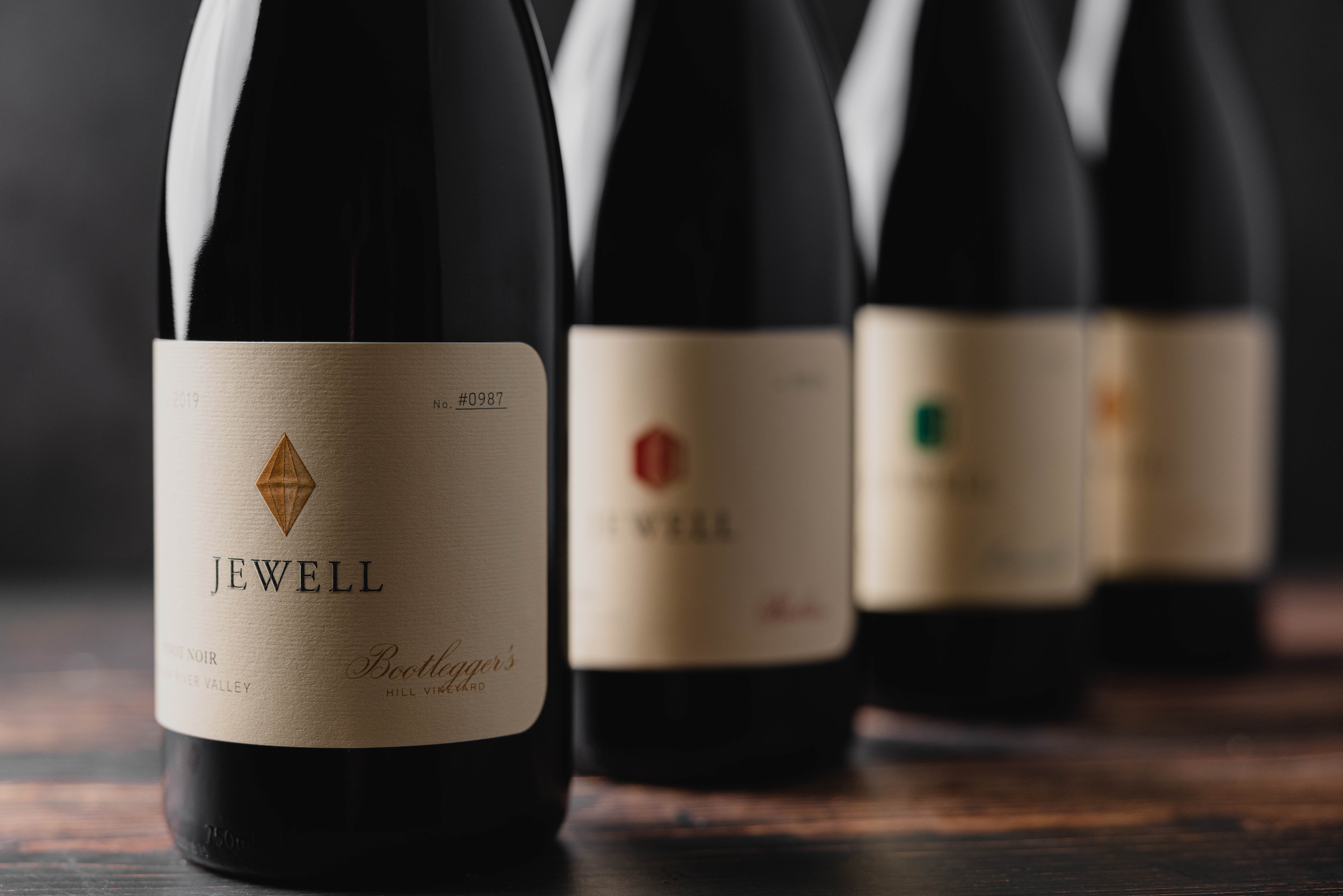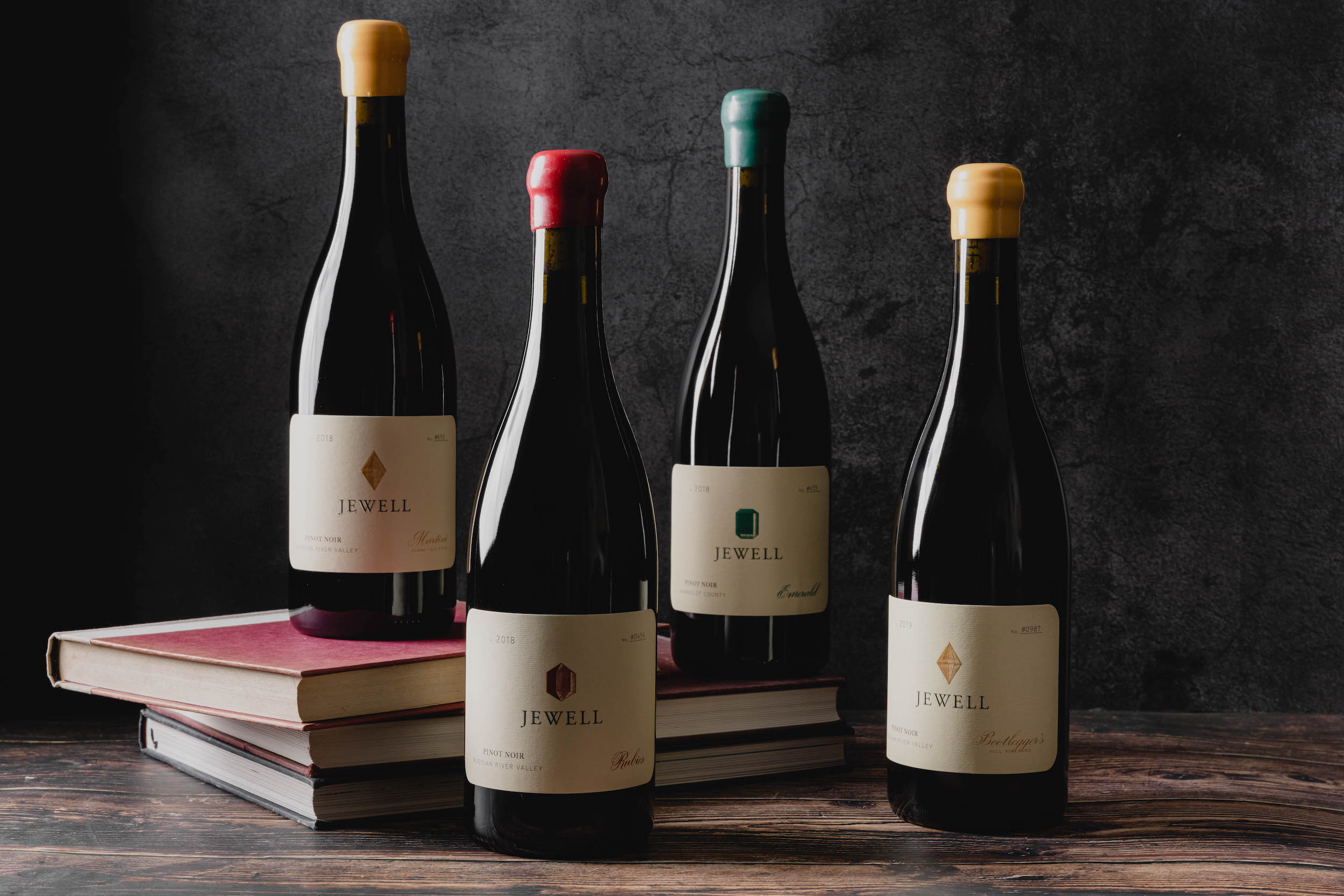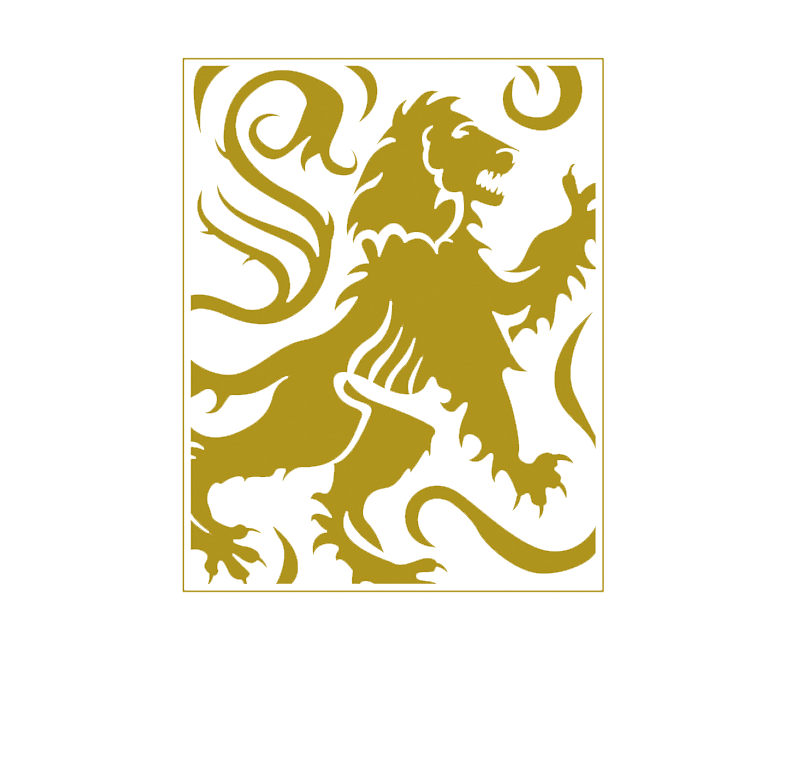
09 May The Past, Present, and Future of Joseph Jewell Wines
2022 marks the 16th year of Joseph Jewell Wines.
Making wine is certainly a labor of love and having a community who supports us through the ups and downs has been a true honor. I’m proud that this small wine business has brought joy to so many. On behalf of myself, my wife Lily, and our three daughters, we want to thank you for your friendship and patronage. Never in my grandest dreams did I imagine where Joseph Jewell would go when we made that first barrel of Russian River Pinot Noir in my little garage in Windsor, California. For one, I was illusioned under the guise of, “if you make it they will buy it.” I know now that is far from fact.
The old industry adage, “making wine is the easy part, selling it is the hard part,” had yet to sink into my brain.
Marked by constant trials, the early years echoed with the question, “When are you going to make money?” often asked by my incredible wife. Our luck began to turn after we received some wonderful press from Wine & Spirits magazine. In 2014, Joseph Jewell was featured as a “Winery to Watch,” along with our 2012 Russian River Pinot Noir and 2012 Grist Vineyard Zinfandel placing in San Francisco’s Wine & Spirits Top 100 Wines in the World tasting. And not that scores matter, but they certainly do sell wine, roughly 40 out of the 50 wines we had made up to that point had received 90 points or higher from various publications.
When I look back at all these great accomplishments, I can’t help but wonder why we struggled to turn a profit. A friend once told me, “you could be giving out gold bricks on your porch, but if no one knows no one will find you.” That hit home.
With a kick in the rear from this epiphany, Joseph Jewell expanded to distributing wines across 17 states and opening our tasting room in downtown Forestville. I was spending three to four months per year on a plane flying to markets to meet with new accounts. Despite the success of selling more wine, I kept hitting a wall. “Who is ‘Joseph Jewell’?” I was frequently asked. Other than the basic story of how my co-founder and I originally came up with the name by putting our middle names together, his Joseph, mine Jewell, I didn’t have an answer. During wine tastings, I would hear, “your label doesn’t represent the person behind it.”
We wanted a label that was elegant and classy, yet was different and stood out on a retailer’s shelf, on a restaurant table, and in your cellar at home. While I loved the original label, clearly we were missing the mark.
There came a point a few years ago when I decided it was time to let people know about our gold bricks.
The Turning Point
In 2018, the Joseph of Joseph Jewell decided to move on from the business. That was a pivotal moment for the brand. Now going solo, I decided to keep the name Joseph Jewell and begin the transition of what was known as our “Gem Series” wines to a new brand called Jewell; an old family name and my middle name. But as with most things in the wine industry, change takes time. When the pandemic hit in 2020 I had free time to focus on the next chapter. This question kept nagging me, how would we move Joseph Jewell into the future and start Jewell?
It’s hard for me to say because I am so immersed in the brand. “You can’t see the things right in front of your nose,” is apropos. Consulting friends, family, and club members, I enlisted the help of a brand strategist. Together we dove into how I make wine, how I sell wine, the histories of the vineyards I work with, my long-term goals for the company, my family life, my family history, and the all-important “why?” What’s it all for?
We discovered that while our core offerings, Russian River Valley Pinot Noir, bring an air of pretension and elitism…
the reason why folks are attracted to Joseph Jewell and the wines we make is because we’re humble, down-to-earth, people that love nothing more than getting together with good food and great wine.
All about community, we also crave the pursuit of adventure and new discoveries. Whether it be a new vineyard, a new winemaking tool, cooking a new recipe, or simply getting to know new people, we yearn for the opportunity to do so.
As the understanding of our story began to take shape it was time to bring it to life visually. It’s important to note that while the black Joseph Jewell label never spoke to me and who I was as a winemaker, it did fulfill its purpose in highlighting a classic, Russian River Valley Pinot Noir “je ne sais quoi”. Bold, young, and different. Enter Tim & Raquel Gatto, label designers who guided me in finding the path of visually retaining the traditions of a wine label while coming to a solution of a single label that looks cohesive on every bottle of wine that I make. From rosé to Hallberg Pinot Noir, my wines now have a home under one look that is distinctly recognized as Joseph Jewell Wines.
While designing various concepts for the new label, the Gatto’s and I discussed the overall packaging of the wines. Being that my wife and I are environmentally conscious in everything we do, I’ve struggled with using tin capsule foils on our bottles for many years. Not only are they a single-use product, but unlike glass bottles and corks, most consumers generally put capsules in the garbage as opposed to the recycling bin. I wanted a way to elevate our packing on all fronts, including becoming more environmentally friendly. Among the wine industry, capsules on your wine bottles is a highly debated topic. However, for us, we decided upon forgoing capsules altogether after using them for almost 16 years.
We came to the conclusion that for our wines meant to be enjoyed younger like our rosé, Vermentino, Russian River Valley Pinot Noir, and Eel River Valley Pinot Noir, we would not use any closure other than a cork in the bottle. The packing will simply be a bottle, cork, and label. For our single-vineyard wines that have the potential to age for some time, they will be sealed with black wax. Historically, closures like wax and foil capsules have been used for hundreds of years as a secondary protectant seal for corks when laying in the cellar. They’re effective at sealing in moisture in the cork while keeping out mold. Wax has the added benefit of keeping a cork from seeping should it fail to keep the wine in the bottle. Oddly enough, using wax today gives a wine bottle both a traditional and modern look.
Jewell
In our quest of redesigning the Joseph Jewell label, we began digging into the visual concepts for this idea called, Jewell. In a sense, Jewell is my quest to discover my true potential as a winemaker by challenging myself to source the greatest fruit typically reserved for the big-name, old-guard producers and crafting a wine worthy of aging in your cellar. When Jewell launches in the Fall of 2022 as a new wine label and a standalone brand, we will have five different wines all produced in 3-5 barrel quantities, truly small-lot gems.
Being an old name on my father’s side, the Jewell family has many tales of their intrepid adventures across the midwest and their eventual journey to settling in Humboldt County, California.
Names like Rubies, Emerald, Martini Clone – Old Girls, Bootlegger, and Ritchie harken back to stories my grandparents would tell us as kids like the one of our great, great, great grandfather racing steam engine boats down the Ohio River for boat titles. How they won by the fraction of a bow by burning Chip & Dale furniture. Or when the Bushwackers came raiding through their town and Mother Jewell, the “old girl,” hid the winnings from the boat race in a butter churn. Their earnestness is the inspiration behind Jewell.
Our flagship wines of Jewell, as they were with the Gem Series past Joseph Jewell members may recall, Rubies and Emerald will remain select barrels from our Russian River Valley (Rubies) and Humboldt County (Emerald) Pinot Noir lots each year. As the names aptly suggest, the bottles will be adorned with embossed illustrations of their respective gemstones with matching color wax to seal the corks. For our single-vineyard Jewell wines, Martini Clone-Old Girls Pinot Noir, Bootlegger’s Hill Vineyard Pinot Noir, and Ritchie Vineyard Chardonnay, the Gatto’s illustrated a diamond shape to adorn each bottle in a muted gold color with matching wax.

Jewell and Joseph Jewell’s new labels feature cream textured paper with similar black fonts. The layouts speak to the brands being connected, yet the overall designs are distinct from each other enabling them to stand alone as separate entities. My time and attention remain unwavering in producing delicious wine regardless of the label on the bottle.
As a winemaker producing Pinot Noir & Chardonnay in the Russian River Valley, I’ve looked to the vineyards I now have the opportunity to work with and the producers who made them, folks like Williams-Selyem, Kosta Browne, Patz & Hall, Ramey, Chenoweth, Arista, DuMol, as the pinnacle for what is achievable. It’s an incredible feeling to walk through vineyards like Ritchie and Bootlegger’s Hill and see the name Jewell on a vineyard end post next to legends like Kosta Browne knowing that our fruit comes from the same place.
It’s hard to believe that I’ve been making wine for close to two decades now. It seems like just yesterday I was in my garage in Windsor hoping that one barrel of Russian River Valley Pinot Noir would be my “big break”. I suppose all of the “big moments” in the life of a business feel momentous and this transition is no different. I’m excited to continue this journey with you, sharing the big and small moments along the way.



